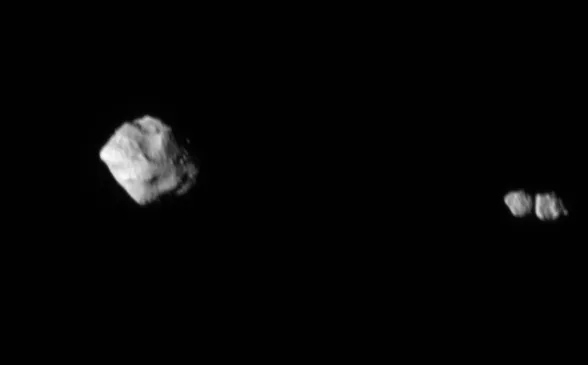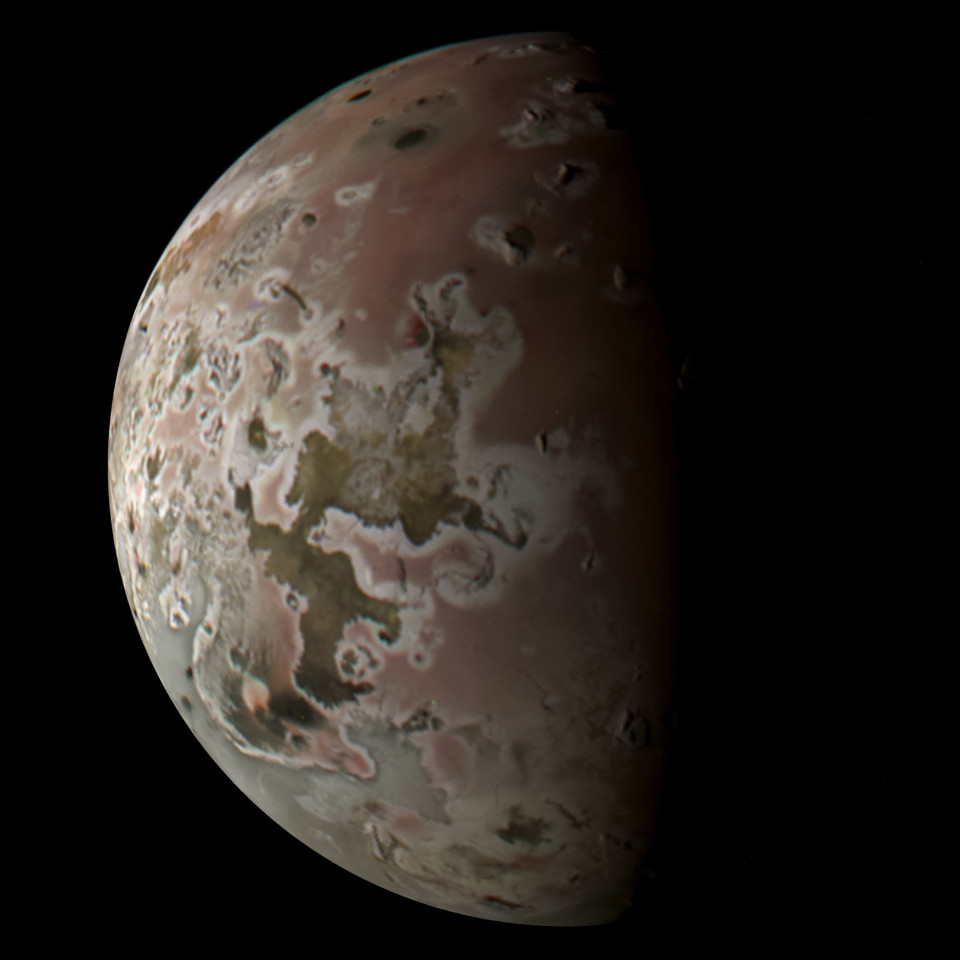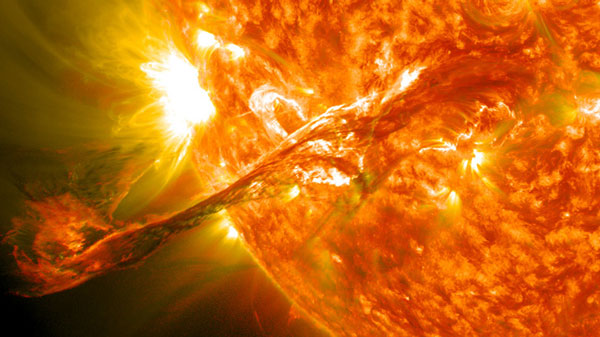
Buried Polygons on Mars Point to “Stark Environmental Transition”
Polygons buried beneath the surface of Mars indicate an abrupt transition in the planet's early history.

The Comet-Asteroid Chiron Has Rings — And They're Changing
A series of stellar occultations has provided evidence that the ring system around this strange object is evolving drastically.

Do Glaciers on Mercury Suggest Such a Planet Could Be Habitable?
Salt glaciers on Mercury suggest conditions friendly to life — but not life itself — might once have existed on the innermost planet.

Amateur Astronomers Discover an Asteroid’s Moon
The small object orbiting around main-belt asteroid 5457 Queen’s is the second confirmed asteroid moon discovered during a stellar occultation.

Watch Uranus's Moon Titania Cover a Star Monday Night
Observers across much of the U.S. and Canada have a unique opportunity Monday night, November 20–21, to see Uranus's brightest moon occult a star.

Explore the Night with Bob King
Jupiter's Great Red Spot Just Keeps Getting Smaller
Jupiter's Great Red Spot may be reaching a milestone this year by shrinking to its smallest size in recorded observational history.

Atomic Oxygen Detected on Venus
New data provide direct evidence for the existence of atomic oxygen in Venus's upper atmosphere, enabling new science on our sister planet.

Lucy Mission Flies By Asteroid Dinkinesh, Finds Binary Moon (Updated)
The Lucy mission's flyby of the main-belt asteroid Dinkinesh resulted in a surprise — yet another asteroid moon!

Bits of Theia Might Be in Earth's Mantle
A "smoking gun" for the ancient calamity that formed Earth’s large Moon may still exist deep in the mantle of our planet.

New Forecast Resets Solar Cycle Expectations
A new forecast suggests that sunspot numbers, aurorae, and other solar activity will peak sooner and at a higher level than expected.

Explore the Night with Bob King
How to See Freaky Starlink "Cluster Flares", Plus the Latest on Comet Lemmon
Alien invasion or flares from satellites in multiple orbits? It depends on your point of view. We also check in on Comet Lemmon, poised to possibly reach binocular-visibility.

Marsquake Reveals Molten Layer Above Martian Core
An impact far from NASA's Insight lander on Mars set off seismic waves that revealed new details about the Martian interior.

Striking New Views of Jupiter and Its Moon Io
The James Webb Space Telescope and Juno mission turned their eyes to Jupiter and its volcanic moon Io, revealing fine details.

Explore the Night with Bob King
Orionid Meteors Fly; Two Moons Shadow Jupiter
Bundle up and enjoy the Orionid meteor shower under moonless skies this week. Don't miss the warm-up act, either, when two of Jupiter's moons pair up in a captivating double-shadow transit.

Unearthing a Solar Storm in Ancient Alpine Trees
Ancient pine trees hold the record of an atmospheric event 14,373 years ago. The only known explanation is a massive solar storm.

Psyche Mission Is on the Way to Psyche, the Asteroid
The Psyche mission launched today, on its way to rendezvous with the asteroid of the same name in 2029.

Astronomy in Space with David Dickinson
First Look at Material from Asteroid Bennu on the Ground
The Osiris-REX sample collection team reveals the first look at material collected from the asteroid Bennu.

“Planet X” May Have Left Our Solar System Billions of Years Ago
A new understanding of far-off worlds in the outer solar system suggests that if "Planet X" ever existed, it has long since left the vicinity.

Explore the Night with Bob King
Comet Hartley Comes Home Again; Gegenschein-gazing
Get acquainted with Comet 103P/Hartley. It's been a dozen years since its last bright apparition. While you're at it challenge yourself to spot the elusive gegenschein.

Psyche Asteroid Mission Set for Launch October 5th
NASA’s newest mission is bound for the metallic asteroid of the same name. The metal-rich rock offers us a view of asteroid interiors.
